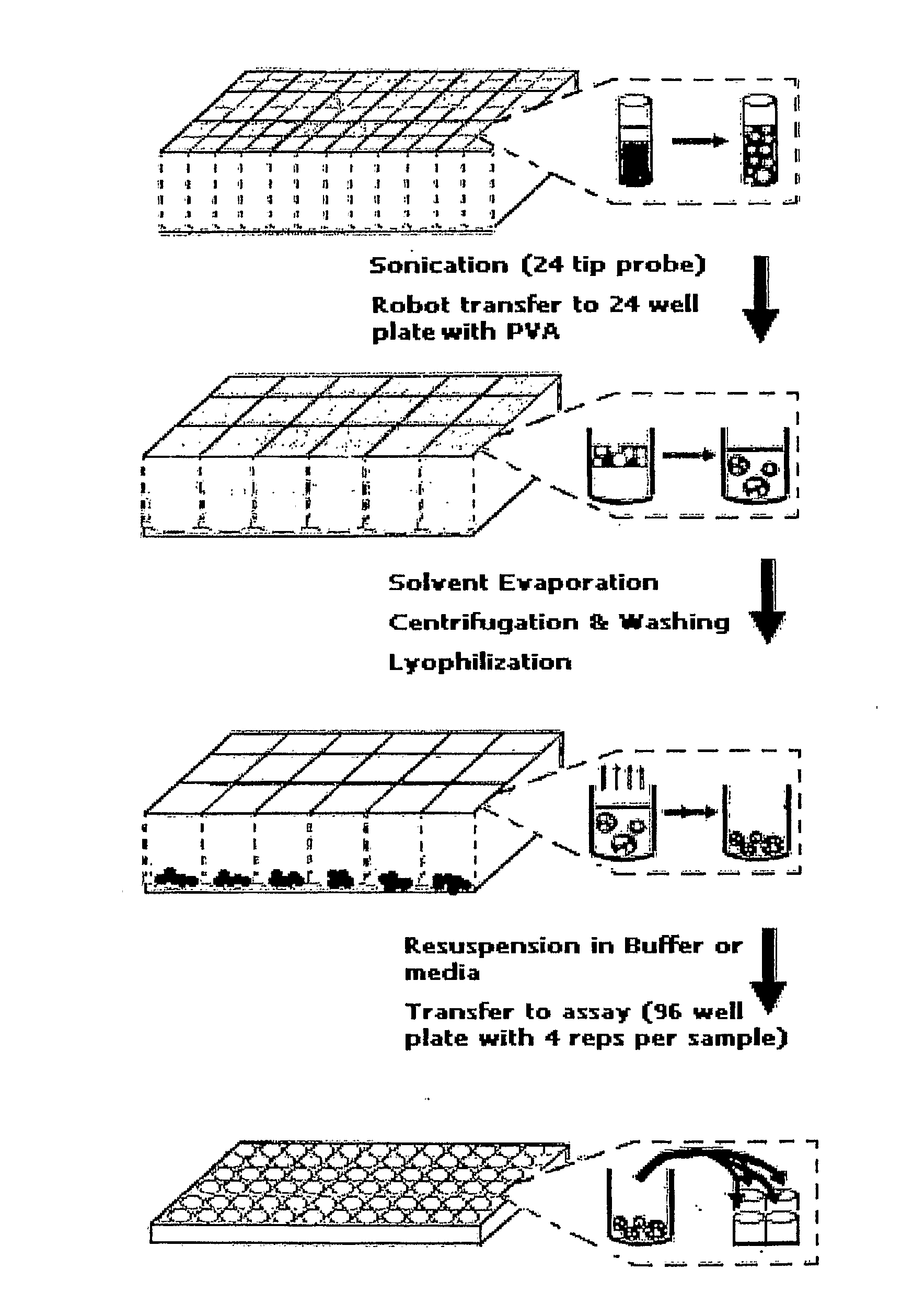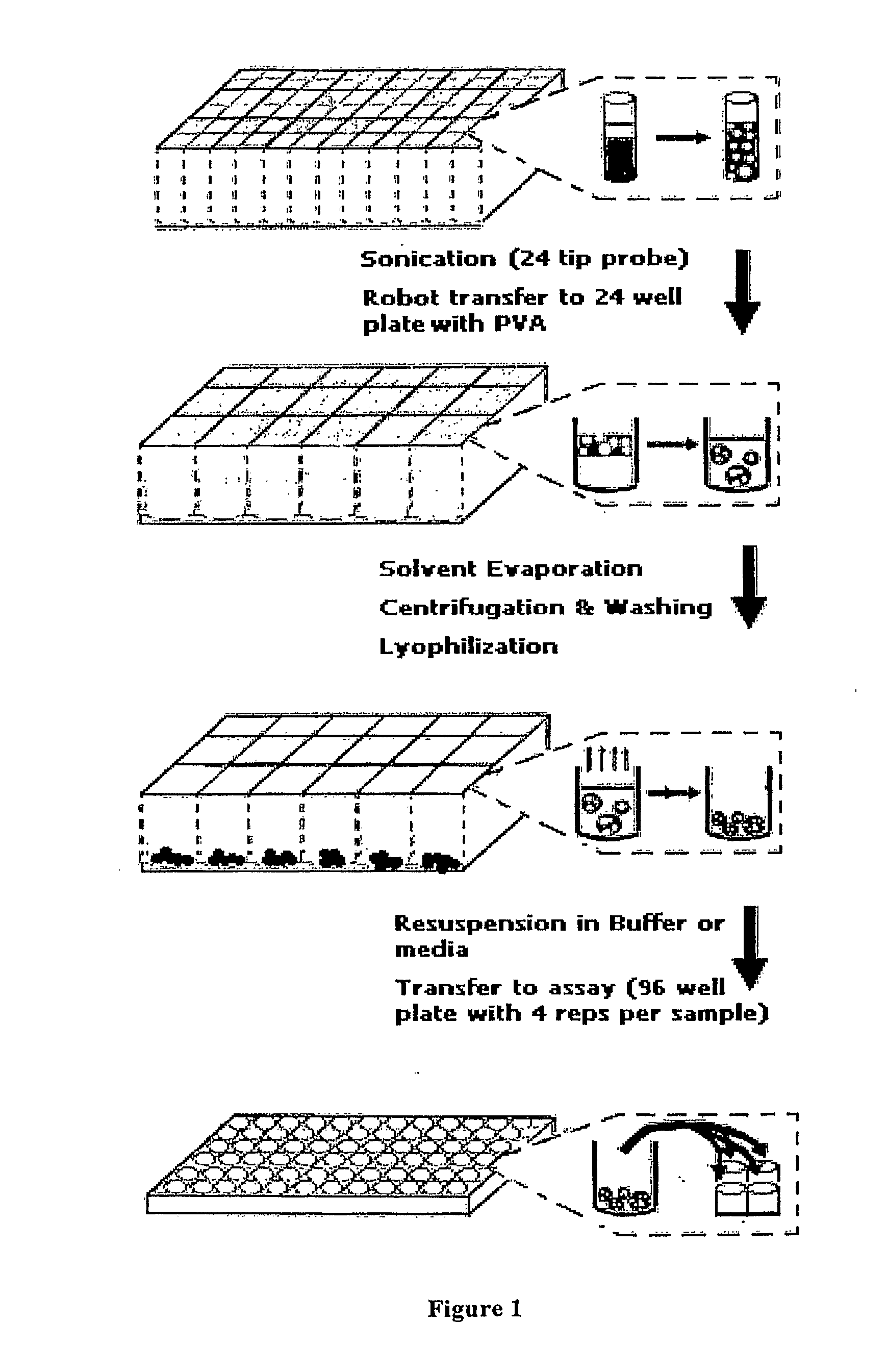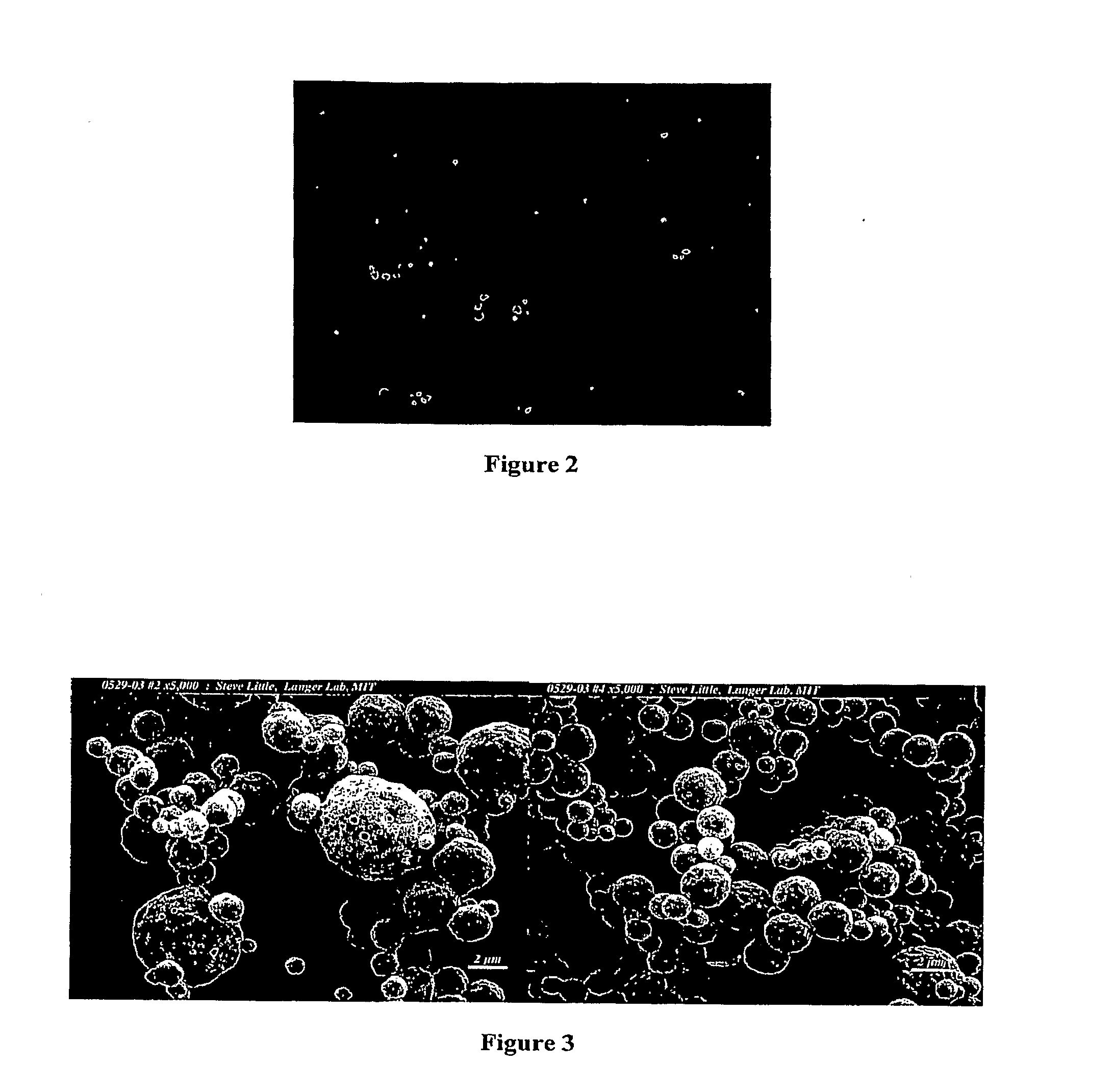High-throughput fabrication of microparticles
a technology of microparticles and fabrication methods, applied in the field of high-throughput fabrication of microparticles, can solve the problems of drastically affecting the delivery capacity of particles, the fabrication of particles, etc., and achieve the effects of reducing particle agglomeration, promoting absorption of therapeutic or diagnostic agents, and increasing bioavailability of agents
- Summary
- Abstract
- Description
- Claims
- Application Information
AI Technical Summary
Benefits of technology
Problems solved by technology
Method used
Image
Examples
example 1
High-Throughput Fabrication of Microparticle Containing Active Plasmid DNA
Materials and Methods
Materials
[0071]Poly(d,l-lactic-co-glycolic acid) polymer (PLGA, RG502H Resomer 50:50) was purchased from Boehringer Ingelheim (Ingelheim, Germany). Poly(β-amino ester)s (PBAE) were synthesized as previously reported (Mn≈7-10 kD) (Anderson, D. G., Lynn, D. M. & Langer, R. Semi-automated synthesis and screening of a large library of degradable cationic polymers for gene delivery. Angew Chem Int Ed Engl 42, 3153-3158 (2003); Lynn, D. M., Amiji, M. M. & Langer, R. pH-responsive polymer microspheres: Rapid release of encapsulated material within the range of intracellular pH. Angew. Chem.-Int. Edit. 40, 1707-1710 (2001); each of which is incorporated herein by reference). Plasmid DNA encoding firefly luciferase (pCMV-Luc) was obtained from Elim Biopharmaceuticals (Hayward, Calif.). Dextran conjugated tetramethyl rhodamine (Mn≈70 kD) was purchased from Molecular Probes (Eugene, Oreg.).
Cells
[0072...
PUM
| Property | Measurement | Unit |
|---|---|---|
| diameter | aaaaa | aaaaa |
| diameter | aaaaa | aaaaa |
| emulsion | aaaaa | aaaaa |
Abstract
Description
Claims
Application Information
 Login to View More
Login to View More - R&D
- Intellectual Property
- Life Sciences
- Materials
- Tech Scout
- Unparalleled Data Quality
- Higher Quality Content
- 60% Fewer Hallucinations
Browse by: Latest US Patents, China's latest patents, Technical Efficacy Thesaurus, Application Domain, Technology Topic, Popular Technical Reports.
© 2025 PatSnap. All rights reserved.Legal|Privacy policy|Modern Slavery Act Transparency Statement|Sitemap|About US| Contact US: help@patsnap.com



